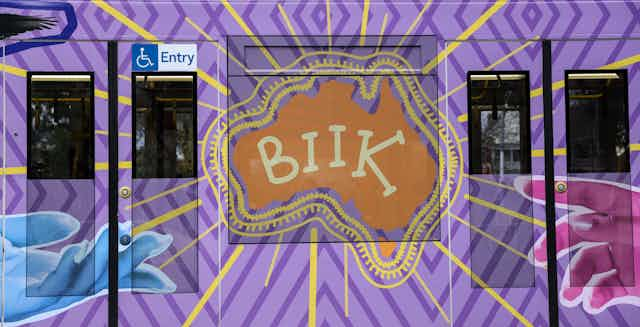The employment gap between Indigenous and non-Indigenous Australians has barely changed since federal and state governments vowed to halve it more than 15 years ago. It’s a failure that raises serious questions about the effectiveness of the policies pursued.
But one government program does seem to be helping, even though it isn’t explicitly designed to improve employment: the Indigenous Procurement Policy.
Since 2015 the federal government has required a percentage of government contracts to be awarded to Indigenous businesses. This is currently 3% of eligible procurements by volume and 1.75% by value (increasing to 3% in 2027-28.)
State and territory governments have similar procurement targets. (Indigenous Australians make up about 3.8% of the population).
We’ve analysed data on more than 3,000 businesses that qualify for this program, registered with Supply Nation, a directory funded by the National Indigenous Australians Agency to assist government departments (and others) to source from an Indigenous business.
Our analysis shows 3,327 businesses employed almost 38,000 people, 36% of whom were Indigenous. That compares with a 2.2% rate among 42 of Australia’s largest corporations surveyed in 2022 for the Woort Koorliny – Australian Indigenous Employment Index.
Read more: Closing the First Nations employment gap will take 100 years
Defining Indigenous ownership
Supply Nation is Australia’s largest directory of Indigenous businesses. There are also state-based registries, such as Kinaway in Victoria, the Northern Territory’s Indigenous Business Network, and Queensland’s Black Business Finder.
To be in the directory a business must be at least 50% Indigenous-owned. The directory also shows if a business is at least 51% Indigenous-owned – the threshold to ensure real control. Some argue this or even 100% Indigenous ownership should be the standard for procurement policies.
Each registry maintains their own processes to verify bona fides. Supply Nation checks the ownership documents of the business and Certification of Aboriginality, typically provided through an Aboriginal community organisation or land council. This information is crosschecked with the Australian Securities and Investments Commission’s business registry.
Not all Indigenous businesses list themselves on registries but the 3,327 in Supply Nation are a good sample size. University of Melbourne research, for example, counted 3,619 Indigenous businesses in Australia in 2018.
Small is bountiful
On average, our results show that the bigger the business, the lower the rate of Indigenous employees.
This likely just reflects limits of the number of Indigenous people in the labour market.
For example, a small family-owned and operated Indigenous business will be able to recruit from personal networks. A large company, by contrast, will recruit from a broader labour market, and find it difficult to maintain a primarily Indigenous workforce. This helps explain why smaller businesses have a Indigenous employment rates of 52%, whereas for the largest Indigenous businesses the rate is 16%. But this is still significantly higher than in non-Indigenous businesses.
Profit or not
About 93% of Supply Nation businesses are for-profit, and 7% are not-for-profit. A higher proportion of not-for-profits are located in remote areas – that likely provide Indigenous-specific community services. This also helps explain the higher rates of Indigenous employment.
Sectoral differences
Supply Nation businesses broadly reflect sectoral industry patterns, with some obvious differences. There are more businesses in education & training, arts and recreation, and public safety and administration.
This reflects government departmental interests and demand for Indigenous knowledge in certain areas. There are for example, 101 organisations offering cultural competency training.
Read more: Caring for Country: how remote communities are building on payment for ecosystem services
Measuring what works
These numbers indicate Indigenous-owned business are powerful drivers of Indigenous employment. The Indigenous Procurement Policy has contributed to this.
Yet oddly, while the policy is intended to provide Indigenous Australians “with more opportunities to participate in the economy”, its contribution to employment is not explicitly mentioned or measured.
Read more: It's time we moved the goalposts on Indigenous policies, so they reflect Indigenous values
As the federal government considers a suite of reforms to employment programs, this is something that should be addressed to ensure the policy directing procurement dollars to where it delivers the best return, for the public purse and Indigenous people.
Our research is also a reminder to individual consumers as to the positive social impacts supporting Indigenous businesses can have.
This article is based on research undertaken at The Australian National University by Christian Eva, Kerry Bodle, Dennis Foley, Jessica Harris and Boyd Hunter.

